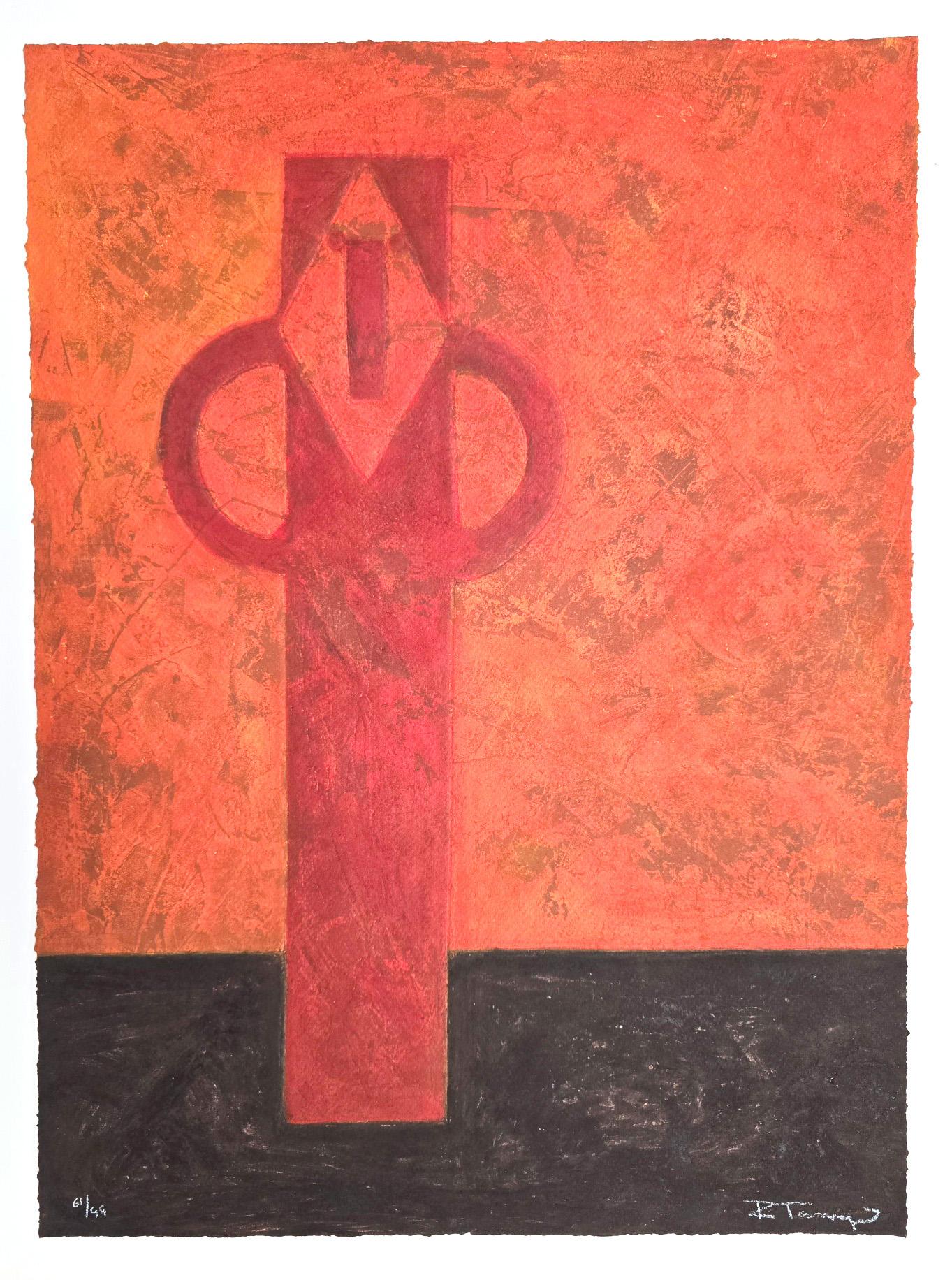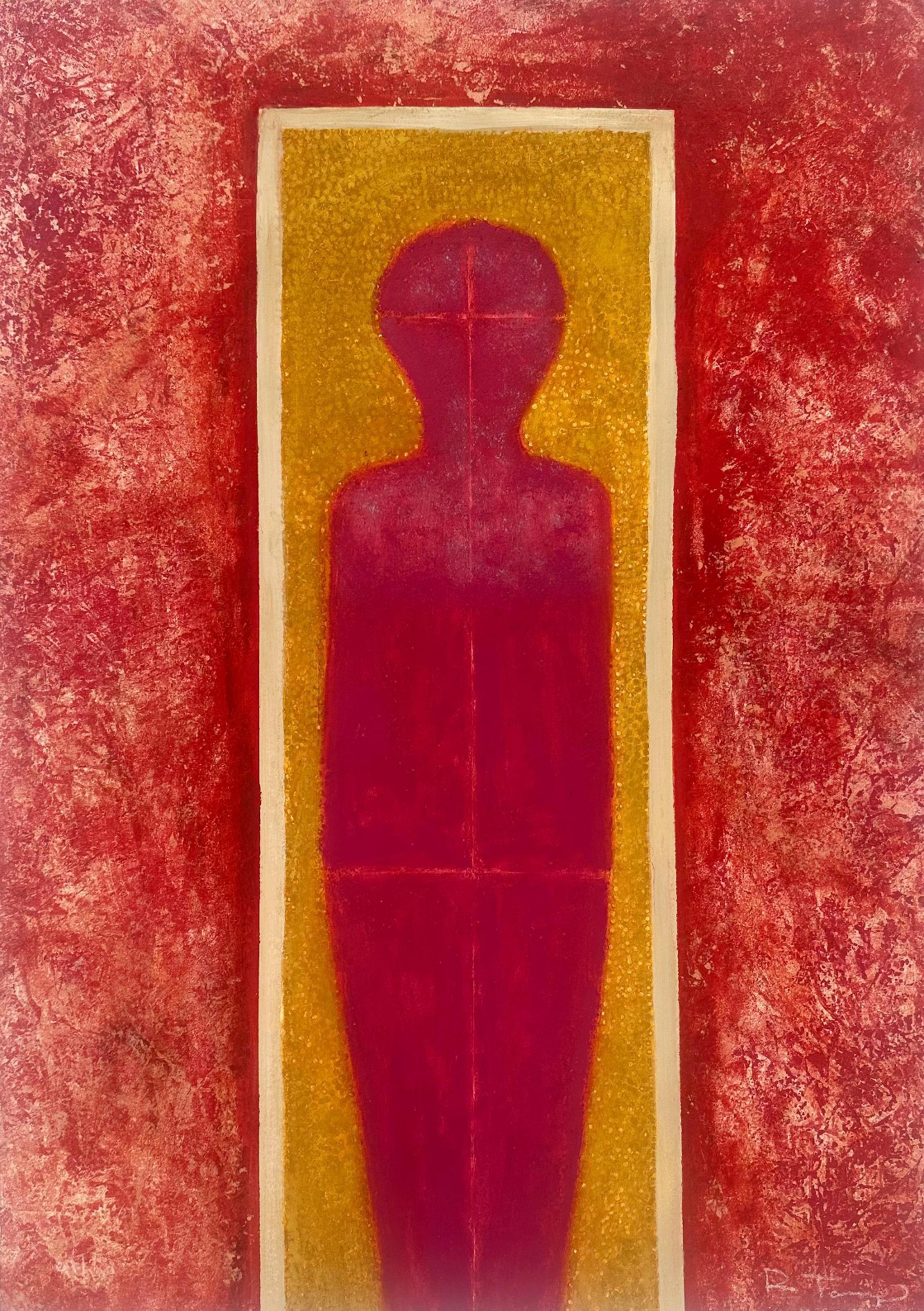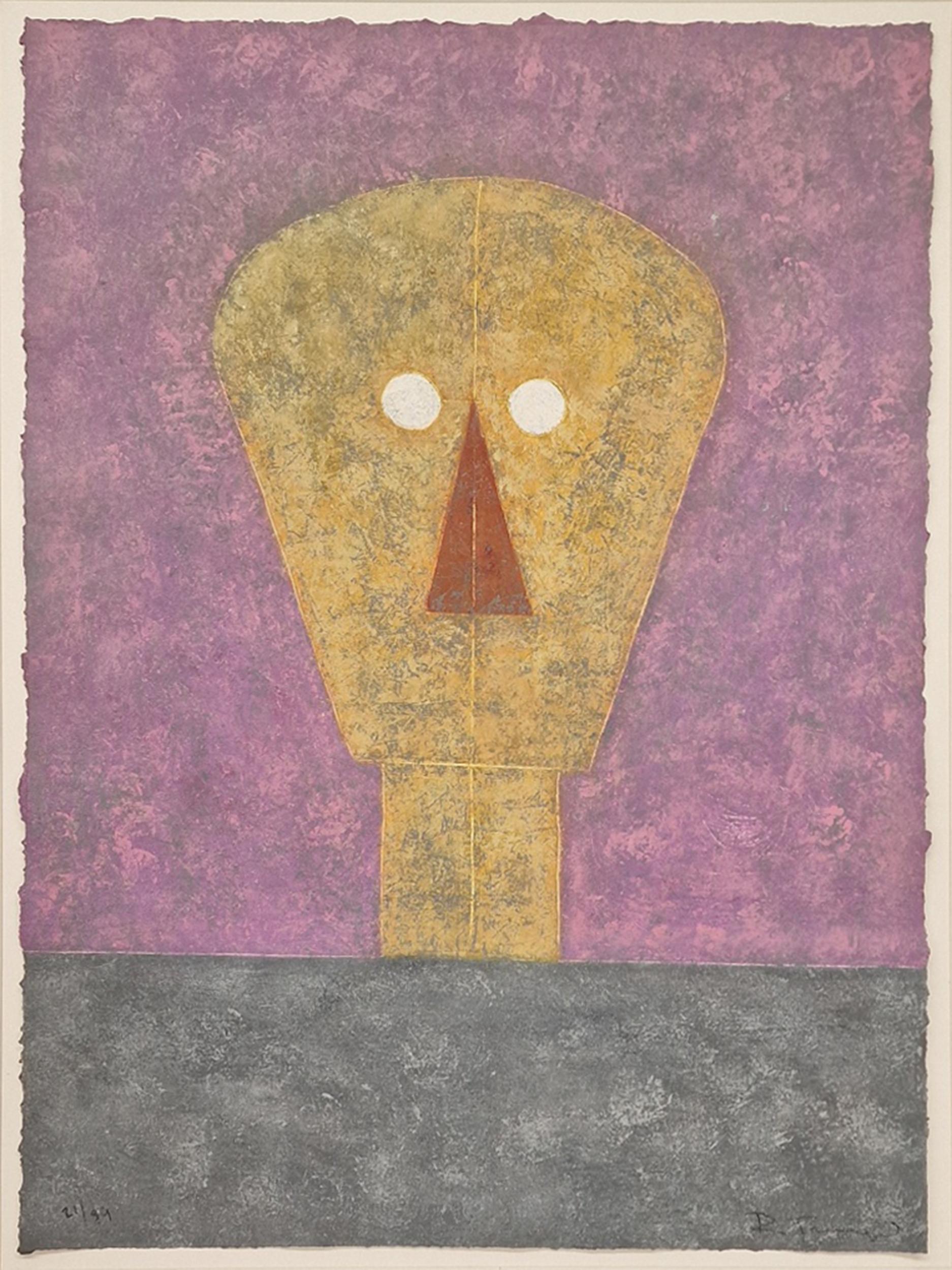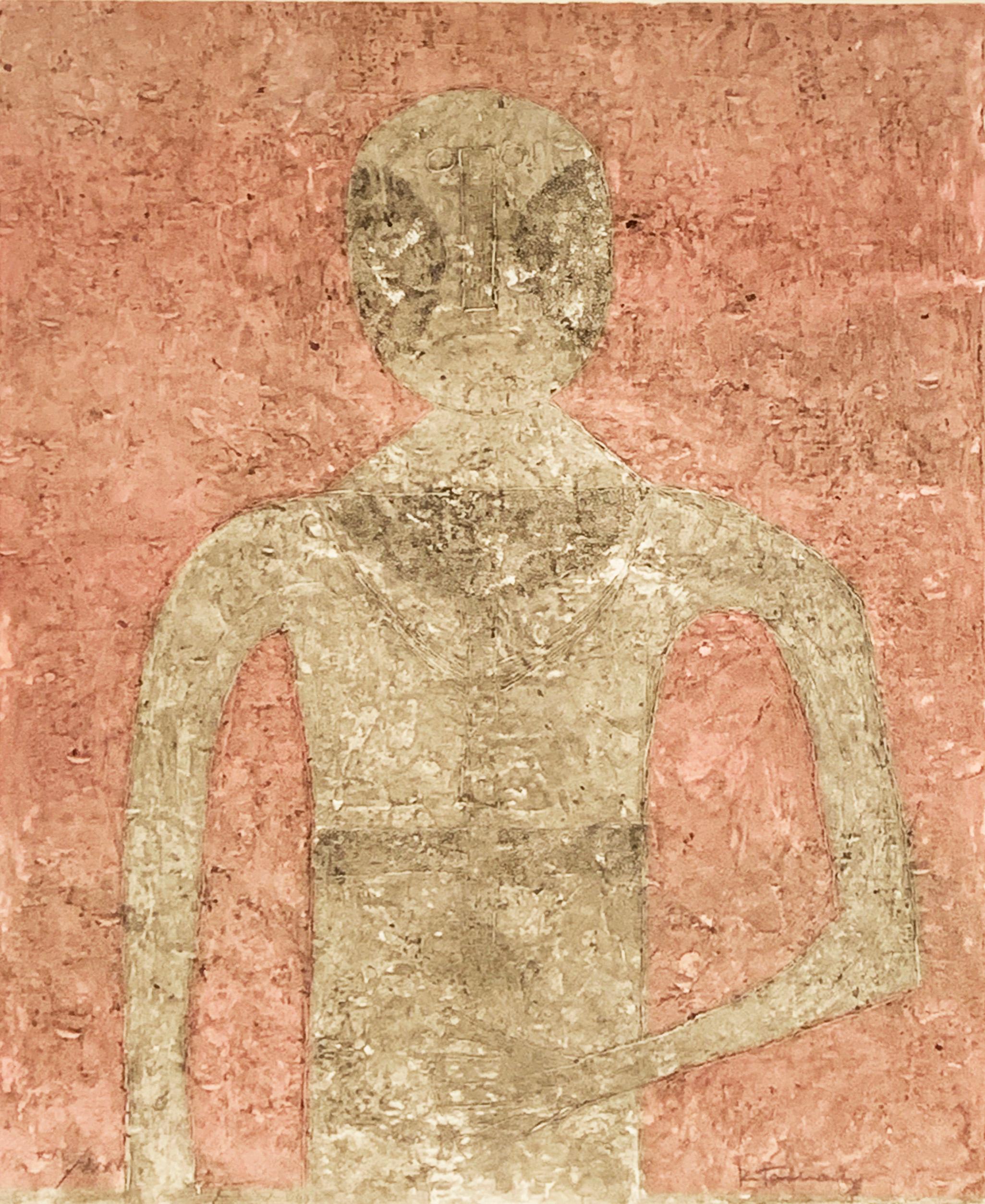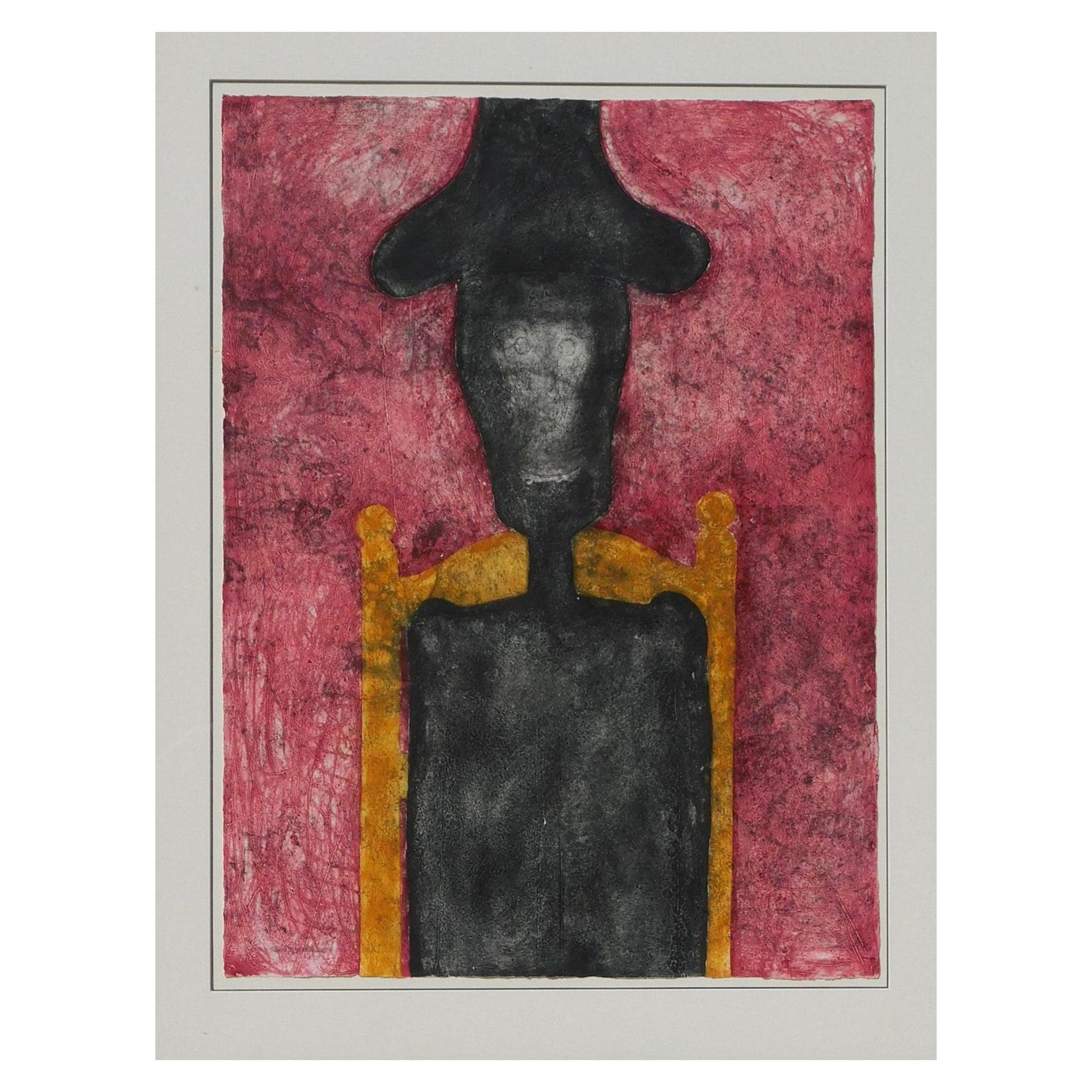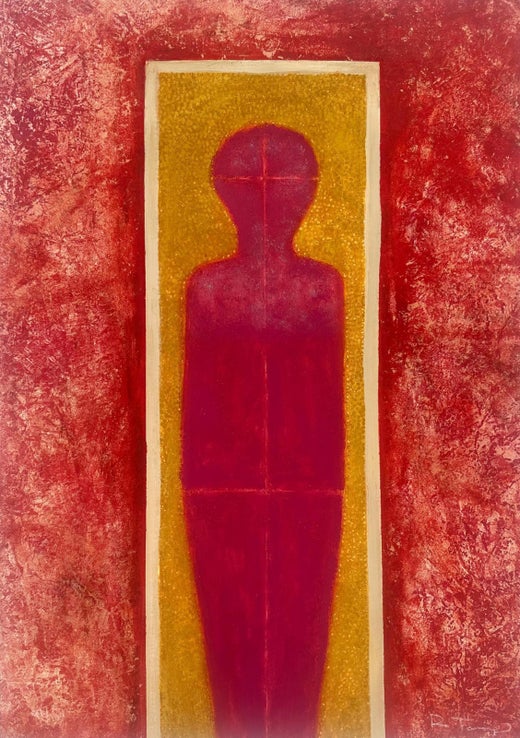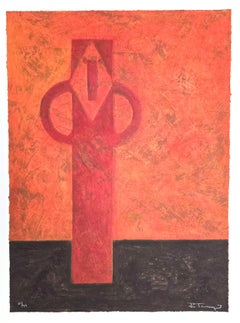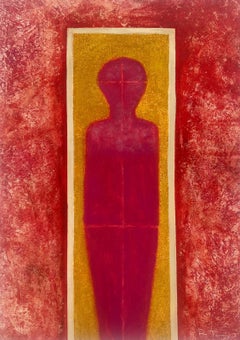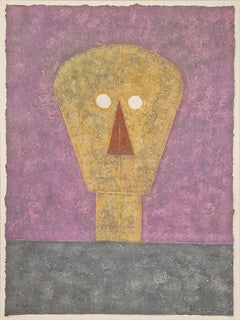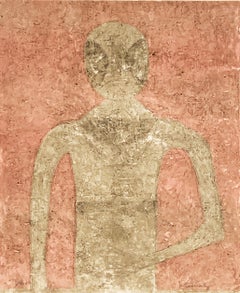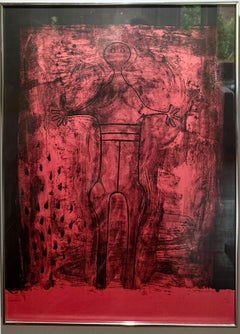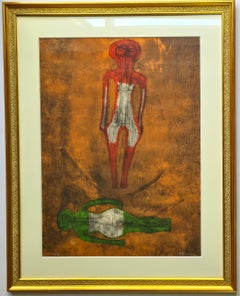Items Similar to Hombre con Brazos Abiertos, Mixograph by Rufino Tamayo
Want more images or videos?
Request additional images or videos from the seller
1 of 8
Rufino TamayoHombre con Brazos Abiertos, Mixograph by Rufino Tamayo1984
1984
$8,000
£6,061.52
€6,955.11
CA$11,257.29
A$12,374.86
CHF 6,503.66
MX$150,275.87
NOK 81,131.51
SEK 76,866.40
DKK 51,907.75
About the Item
Rufino Tamayo, Mexican (1899 - 1991) - Hombre con Brazos Abiertos. Year: 1984, Medium: Mixograph, signed and numbered in pencil, Edition: 71/100, Size: 35.5 x 26.75 in. (90.17 x 67.95 cm), Printer: Taller de Grafica Mexicana, Reference: Pereda 325, Description: A Surrealist print by Mexican artist Rufino Tamayo of a thin black figure standing with its arms outstretched, silhouetted against a pink and purple background. This piece is a Mixografia, featuring finer detail and surface texture than traditional prints. It is 71 of 100 numbered editions and is signed in pencil by the artist.
- Creator:Rufino Tamayo (1899-1991, Mexican)
- Creation Year:1984
- Dimensions:Height: 35.5 in (90.17 cm)Width: 26.75 in (67.95 cm)
- Medium:
- Movement & Style:
- Period:
- Framing:Framing Options Available
- Condition:
- Gallery Location:Long Island City, NY
- Reference Number:Seller: 821121stDibs: LU46614406992
Rufino Tamayo
Rufino Tamayo was born in Oaxaca, Mexico, in 1899 to parents Manuel Arellanes and Florentina Tamayo. Tamayo was active in the mid-20th century in Mexico and New York, painting figurative abstraction with surrealist influences. Although Tamayo studied drawing at the Academy of Art at San Carlos as a young adult, he became dissatisfied and eventually decided to study on his own.
About the Seller
4.9
Platinum Seller
Premium sellers with a 4.7+ rating and 24-hour response times
Established in 1979
1stDibs seller since 2014
3,112 sales on 1stDibs
Typical response time: 1 hour
- ShippingRetrieving quote...Shipping from: Long Island City, NY
- Return Policy
Authenticity Guarantee
In the unlikely event there’s an issue with an item’s authenticity, contact us within 1 year for a full refund. DetailsMoney-Back Guarantee
If your item is not as described, is damaged in transit, or does not arrive, contact us within 7 days for a full refund. Details24-Hour Cancellation
You have a 24-hour grace period in which to reconsider your purchase, with no questions asked.Vetted Professional Sellers
Our world-class sellers must adhere to strict standards for service and quality, maintaining the integrity of our listings.Price-Match Guarantee
If you find that a seller listed the same item for a lower price elsewhere, we’ll match it.Trusted Global Delivery
Our best-in-class carrier network provides specialized shipping options worldwide, including custom delivery.More From This Seller
View AllFigura Hieratica, Surrealist Etching by Rufino Tamayo
By Rufino Tamayo
Located in Long Island City, NY
Portfolio: Rufino Tamayo 15 aguafuertes 1979
Date: 1979
Etching, signed and numbered in pencil
Edition of 61/99
Image Size: 20 x 28 inches
Size: 22 x 30 in. (55.88 x 76.2 cm)
Printer...
Category
1970s Surrealist Landscape Prints
Materials
Etching
Affiche avant Lettre (Mujer Suite), 1969 Lithograph by Rufino Tamayo
By Rufino Tamayo
Located in Long Island City, NY
Affiche avant Lettre (Mujer Suite)
Rufino Tamayo
Mexican (1899–1991)
Date: 1969
Lithograph Poster, signed in the plate
Size: 32.5 x 24 in. (82.55 x 60.96 cm)
Category
1960s Prints and Multiples
Materials
Lithograph
Figura de Pie, Surrealist Mixografia Print by Rufino Tamayo
By Rufino Tamayo
Located in Long Island City, NY
Rufino Tamayo, Mexican (1899 - 1991) - Figura de Pie, Year: 1977, Medium: Mixografia, signed and numbered in pencil, Edition: 91/100, Size: 27.5 x 19.5 in. (69.85 x 49.53 cm), Pr...
Category
1970s Surrealist Figurative Prints
Materials
Mixed Media
Cabez sobre fondo Rosa, Surrealist Etching by Rufino Tamayo
By Rufino Tamayo
Located in Long Island City, NY
A Surrealist etching by Mexican artist Rufino Tamayo of a simple yellow figure against a pink background, staring at the viewer with piercing white eyes. This piece is 21 of 99 numb...
Category
1980s Portrait Prints
Materials
Etching
Cabeza Sobre Fondo Verde, Surrealist Etching by Rufino Tamayo
By Rufino Tamayo
Located in Long Island City, NY
Rufino Tamayo, Mexican (1899 - 1991) - Cabeza Sobre Fondo Verde, Portfolio: Rufino Tamayo 15 aquafuertes, Year: 1979, Medium: Etching, signed and numbered in crayon, Edition: 14/...
Category
1970s Surrealist Portrait Prints
Materials
Etching
Capitulo XXI, Surrealist Lithograph by Rufino Tamayo
By Rufino Tamayo
Located in Long Island City, NY
Rufino Tamayo, Mexican (1899 - 1991) - Capitulo XXI, Portfolio: Apocalypse de Saint Jean, Year: 1959, Medium: Lithograph on BFK Rives, Edition: 93/255, Size: 13 x 10 in. (33.02 x 25....
Category
1960s Surrealist Abstract Prints
Materials
Lithograph
You May Also Like
"Hombre Blanco", Rufino Tamayo, Figurative Abstraction, Lithograph, 30x22 in.
By Rufino Tamayo
Located in Dallas, TX
"Hombre Blanco" by Rufino Tamayo is a Figurative Abstraction mixografia in color limited edition measuring 30x22 in. The piece is framed beautifully with...
Category
1970s Abstract Expressionist Figurative Prints
Materials
Etching
Rufino Tamayo Mixografia “Hombre En Negro, ” circa 1976
By Rufino Tamayo
Located in Phoenix, AZ
Mixografia “Man in Black” by well-known Mexico artist Rufino Tamayo (1891-1991).
Signed “R. Tamayo” in pencil lower right. Numbered in pencil “60/140" lower left.
In excellent unfram...
Category
Late 20th Century Abstract Prints
Materials
Other Medium
Original Lithograph PENCIL SIGNED Ed. 30/150 Affiche avant la lettre LAS MUJERAS
By Rufino Tamayo
Located in New York, NY
Here we have an Original Pencil Signed and Numbered Lithograph by Rufino Tamayo, famous Mexican American Artist…. known for abstract Figurative Expressionist images
There was only a...
Category
1960s Abstract Expressionist Abstract Prints
Materials
Lithograph
Rufino Tamayo -- Dos Figuras
By Rufino Tamayo
Located in BRUCE, ACT
Rufino Tamayo
Dos Figuras, 1973
Lithograph in colors
Hand-signed lower right in white crayon
Numbered 21/75 cm lower left in white crayon
Sheet size 76 x 56 cm
Frame size 98 x 80 x ...
Category
1970s Prints and Multiples
Materials
Lithograph
Hombre en gris, 1981
By Rufino Tamayo
Located in Warren, NJ
in good condition some minor scratching on the plexiglass
Category
1980s Prints and Multiples
Materials
Lithograph
La Negra (The Black Woman)
By Rufino Tamayo
Located in San Francisco, CA
This artwork titled "La Negra (The Black Woman)" from the suite "The Mujeres File" 1969 is an original colors lithograph on B.F.K. Rives paper by renown Mexican artist Rufino Tamayo, 1899-1991. It is hand signed and numbered 150/150 in pencil by the artist. The image size is 26.85 x 21.25 inches, sheet size is 29.5 x 22.15 inches, framed size is 42 x 35 inches. Published by Touchtone Publisher, New York, printed by Ateliers Desjobert, Paris. Referenced and pictured in the artist's catalogue raisonne by Pereda, plate #109 page 107. Custom framed in a wooden silver frame, with silver spacer and fabric matting. It is in excellent condition.
About the artist:
A native of Oaxaca in Southern Mexico, Rufino Tamayo's father was a shoemaker, and his mother a seamstress. Some accounts state that he was descended from Zapotec Indians, but he was actually 'mestizo' - of mixed indigenous/European ancestry. (Santa Barbara Museum of Art). He began painting at age 11. Orphaned at the age of 12, Tamayo moved to Mexico City, where he was raised by his maternal aunt who owned a wholesale fruit business.
In 1917, he entered the San Carlos Academy of Fine Arts, but left soon after to pursue independent study. Four years later, Tamayo was appointed the head designer of the department of ethnographic drawings at the National Museum of Archaeology in Mexico City. There he was surrounded by pre-Colombian objects, an aesthetic inspiration that would play a pivotal role in his life. In his own work, Tamayo integrated the forms and tones of pre-Columbian ceramics into his early still lives and portraits of Mexican men and women.
In the early 1920s he also taught art classes in Mexico City's public schools. Despite his involvement in Mexican history, he did not subscribe to the idea of art as nationalistic propaganda. Modern Mexican art at that time was dominated by 'The Three Great Ones' : Diego Rivera, Jose Clemente Orozco, and David Alfaro Siqueros, but Tamayo began to be noted as someone 'new' and different' for his blending of the aesthetics of post Revolutionary Mexico with the vanguard artists of Europe and the United States.
After the Mexican Revolution, he focused on creating his own identity in his work, expressing what he thought was the traditional Mexico, and refusing to follow the political trends of his contemporary artists. This caused some to see him as a 'traitor' to the political cause, and he felt it difficult to freely express himself in his art. As a result, he decided to leave Mexico in 1926 and move to New York, along with his friend, the composer Carlos Chavez. The first exhibition of Tamayo's work in the United States was held at the Weyhe Gallery, New York, in that same year. The show was successful, and Tamayo was praised for his 'authentic' status as a Mexican of 'indigenous heritage', and for his internationally appealing Modernist aesthetic. (Santa Barbara Museum of Art).
Throughout the late thirties and early forties New York's Valentine Gallery gave him shows. For nine years, beginning in 1938, he taught at the Dalton School in New York.
In 1929, some health problems led him to return to Mexico for treatment. While there he took a series of teaching jobs. During this period he became romantically involved with the artist Maria Izquierdo...
Category
Mid-20th Century Modern Figurative Prints
Materials
Lithograph
Read More
How Rufino Tamayo Pushed Printmaking into Three Dimensions
The legendary Mexican artist prompted the development of a three-dimensional plate that results in richly textured prints.
Romare Bearden’s Humanity Infuses His Bright, Bold Art
Through collage, painting and printmaking, the artist foregrounded Black life in America in revolutionary new ways.
More Ways To Browse
Arms Outstretched
Cote D Azur Vintage Posters
Cote D Azur Vintage Travel Poster
Craig Martin
Curtis Engraving
Dali 1977
Jim Dine Poster
La Revue Blanche
Matador And Bull
Maurice Utrillo Montmartre
Max Jaffe
Modern Jesus Art
Morocco Poster
Moses Etching
Mucha Lithograph Original
Pablo Ruiz Picasso
Picasso Etching Plate
Poster Normandy
